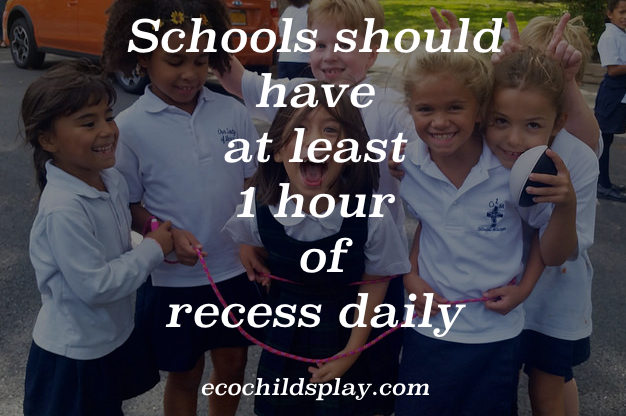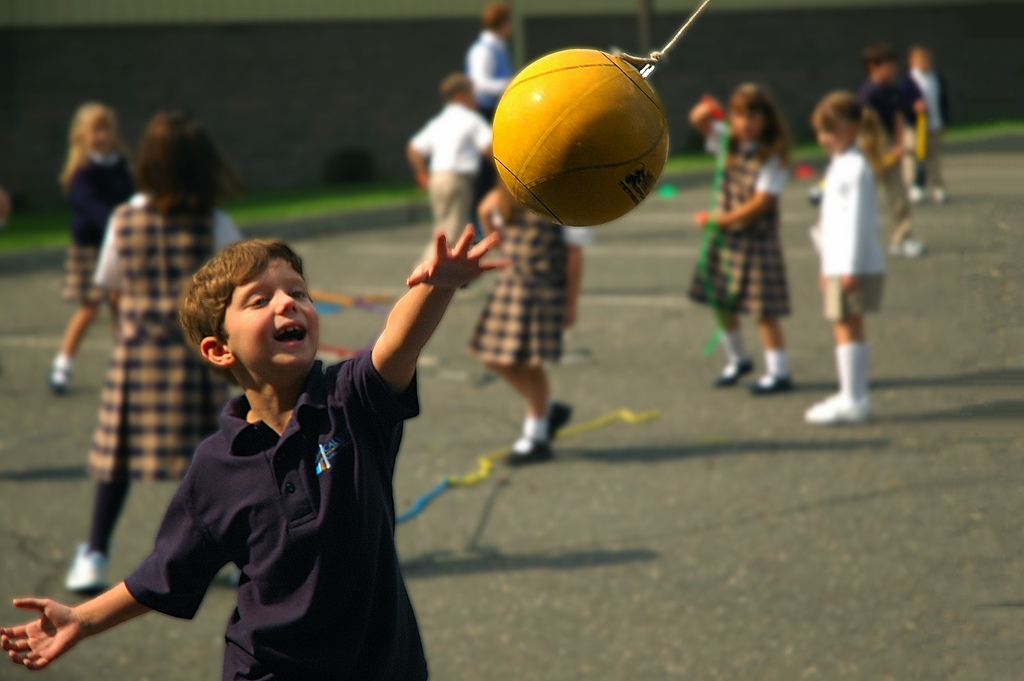States establish mandatory minimum amounts of instructional minutes for schools. Recess does not count towards these minutes, but most schools recognize children (and teachers) need a break. The typical amount of recess is 15 minutes mid-morning and 15 minutes before or after lunch.
Photo credit: Joe Shlabotnik via Foter.com / CC BY-NC-SA
Is 30 minutes of recess enough? How much recess should your child get?
In this time of Common Core standards on the heels of No Child Left Behind, many schools have shortened or eliminated recess all together in order increase instructional time. Yet research finds that children NEED recess.
The New York Times reported:
And many children are not getting that break. In the Pediatrics study, 30 percent were found to have little or no daily recess. Another report, from a children’s advocacy group, found that 40 percent of schools surveyed had cut back at least one daily recess period.
Also, teachers often punish children by taking away recess privileges. That strikes Dr. Barros as illogical. “Recess should be part of the curriculum,” she said. “You don’t punish a kid by having them miss math class, so kids shouldn’t be punished by not getting recess.”((http://www.nytimes.com/2009/02/24/health/24well.html?_r=2&emc=eta1))
One school is bucking the trend to reduce recess time.
Students at Eagle Mountain Elementary in Fort Worth, Texas get recess 4 times a day!
Kindergarteners and first graders take two 15 minute breaks in the morning and two 15 minute breaks in the afternoon. Teachers and teachers are noticing results! Today shares:
“There was a part of me that was very nervous about it,” Donna McBride, a first-grade teacher at the school, told TODAY Parents.
“I was trying to wrap my head around my class going outside four times a day and still being able to teach those children all the things they needed to learn.”
Some five months into the experiment, McBride’s fears have been alleviated. Her students are less fidgety and more focused, she said. They listen more attentively, follow directions and try to solve problems on their own instead of coming to the teacher to fix everything. There are fewer discipline issues.
“We’re seeing really good results,” she noted.
Parents are seeing them, too. Amy Longspaugh noticed her 6-year-old daughter Maribel, who is in McBride’s class, has become more independent and writes with more detail and creativity. Maribel has also made more friends as the kids mingle outside. ((http://www.today.com/parents/want-kids-listen-more-fidget-less-try-more-recess-school-t65536))
Photo credit: A.M. Images via Foter.com / CC BY-NC-ND
It’s such a simple way to increase productivity and reduce behavior issues. That being said, as a former teacher, I remember children often come in from recess arguing and upset. We got into the practice of mindfulness after recess for five to ten minutes to help children transition from free play to the classroom.
The American Academy of Pediatrics makes the following position on “The Crucial Roll of Recess in School”:
Recess is at the heart of a vigorous debate over the role of schools in promoting the optimal development of the whole child. A growing trend toward reallocating time in school to accentuate the more academic subjects has put this important facet of a child’s school day at risk. Recess serves as a necessary break from the rigors of concentrated, academic challenges in the classroom. But equally important is the fact that safe and well-supervised recess offers cognitive, social, emotional, and physical benefits that may not be fully appreciated when a decision is made to diminish it. Recess is unique from, and a complement to, physical education—not a substitute for it. The American Academy of Pediatrics believes that recess is a crucial and necessary component of a child’s development and, as such, it should not be withheld for punitive or academic reasons.((http://pediatrics.aappublications.org/content/131/1/183))
How much recess should your child get?
The AAP does not recommend how much time a child should spend in recess, but I find the Japanese system quite interesting, especially considering most Japanese schools do not have adult supervision at recess time.
Peer-reviewed research has examined the timing and type of activity during recess and chronicled the many benefits of recess for children, without establishing an optimal required duration.2,8,12,13,18,19,21 There is consensus about the need for regularly scheduled recess based on national guidelines, even though the length of the recess period has not been firmly established. In schools, the length specified for recess ranges widely, from 20 to 60 minutes per day.24,30 In other countries, such as Japan, primary school-aged children have a 10- to 15-minute break every hour, and this is thought to reflect the fact that attention spans begin to wane after 40 to 50 minutes of intense instruction.46 On the basis of this premise, to maximize cognitive benefits, recess should be scheduled at regular intervals, providing children sufficient time to regain their focus before instruction continues.((http://pediatrics.aappublications.org/content/131/1/183))
Eagle Mountain Elementary is participating in a program called LiiNK, which is based on Finnish educational practices. Like children in Japan, Finnish children receive a 15-minute break for every instructional hour. ((http://www.today.com/parents/want-kids-listen-more-fidget-less-try-more-recess-school-t65536)) If schools in the US followed this model, young children would get approximately 1.5 hours a day of recess (the average primary instructional day is about six hours long).
After five months, Eagle Mountain Elementary saw results. Hopefully, more schools will follow this trend to increase recess time. It is developmentally appropriate, simple, and effective. Parents can take this information to school administrators and advocate for their children to receive more recess.


Thanks for helping!
i agree. We need 3 periods of 15-minute recesses. Very corect. 10 minutes is so bad. I get 20 and that’s still bad